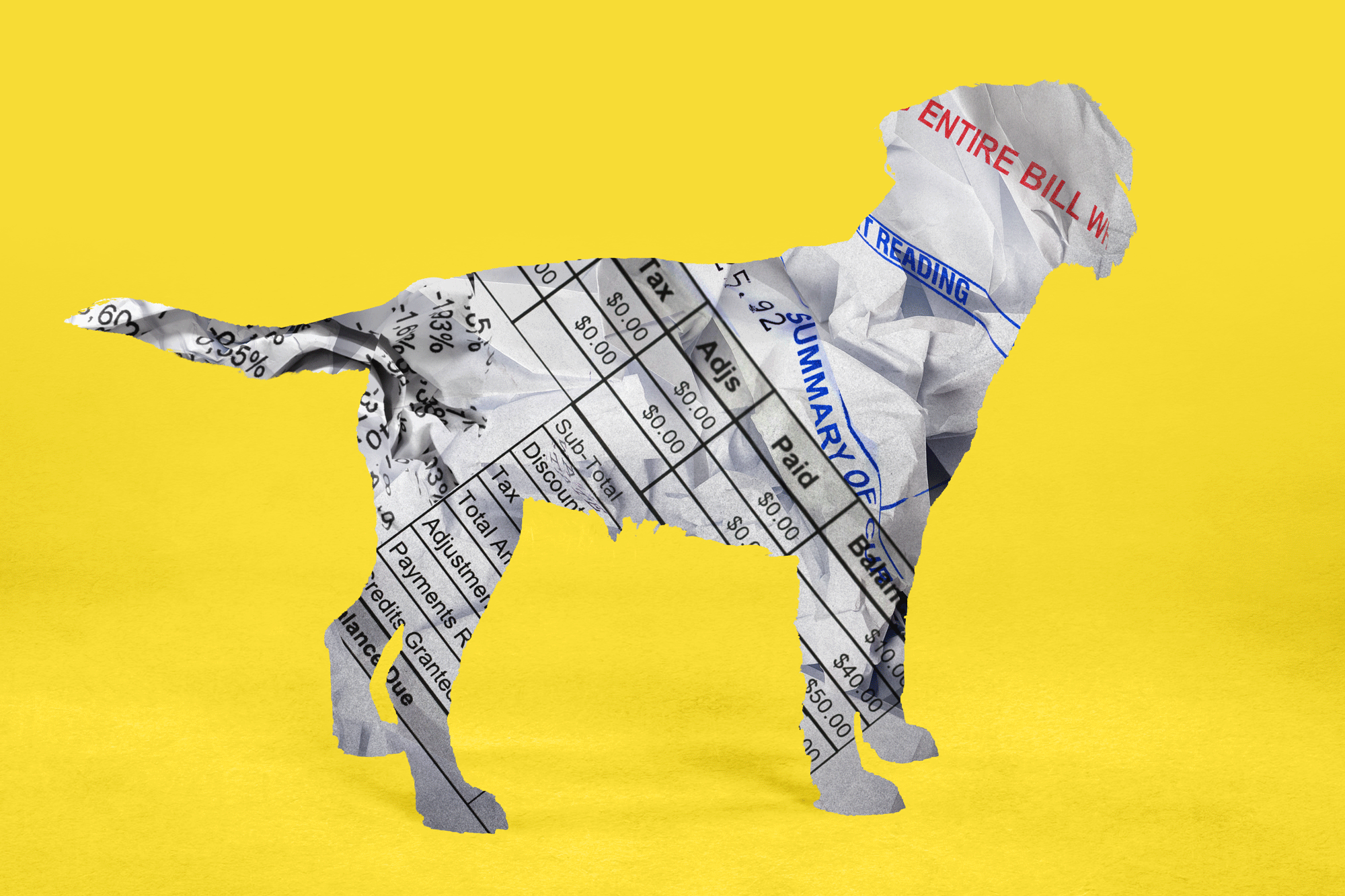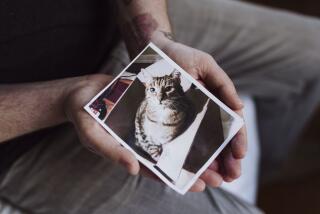Veterinarians Who Visit : Pet doctors: Those who make house calls are almost as rare as their physician counterparts, but a handful are making rounds in the Valley.
- Share via
When Paul Newman isn’t feeling well, Dr. Kerry Willetts rushes to his residence to examine her blue-eyed patient. Willetts sometimes has to coax him out from under a bed. Then she soothingly strokes his chin, even if he hisses in anger.
Of course, not just anybody gets the star treatment from Willetts. She only treats cats and dogs. Paul Newman, a fluffy 13-year-old Siamese, lives in North Hollywood with fellow feline, 14-year-old A.J. Foyt. They share the premises with owner Harald Treichler. Encino veterinarian Willetts has provided at-home care for Paul and A.J. since they were kittens.
Veterinarians who make house calls are about as rare as their physician counterparts. According to the Southern California Veterinary Medical Assn., less than 1% of the more than 1,000-member veterinarians in Los Angeles and Orange counties take their acts on the road. A tiny handful make rounds in the San Fernando Valley.
John de Jong, president of the Boston-based American Assn. of Housecall Veterinarians, a 3-year-old, 350-member organization, believes the number of mobile vets will grow. “More and more, we are evolving into a service-oriented society,” he said.
“I like going to the home because the animals are not disturbed,” Willetts said. “And many people can’t get their animals into a car. The dog throws up; the cat screams.” She said house calls are especially appreciated by the elderly, shut-ins, those without transportation and multiple-pet owners.
Lori Weintraub is in the latter category. She shares her Sepulveda residence with two preschoolers, a dog named Minerva and cats Bilbo and Bazzle, who is prone to car sickness. When it came time to load everyone in the family Escort for a trip to the vet, she said, “With two kids and three animals, I was seriously outnumbered.” Now she relies on house call veterinarian Joseph Giardina.
The “we deliver” veterinary approach is not only a convenience to owners and a relief to skittish pets, but can also be a boon to vets trying to break into the business, according to de Jong. “A new veterinarian can get a house call practice going with far less capital,” he said.
“So many of us get out of school with horrendous debts,” said Encino veterinarian Gayle Robison, who launched her Cat’s Meow house call service three years ago. “We just can’t stockpile the huge amount of money needed for a down payment on a clinic.”
She said a veterinary practice in the San Fernando Valley may have a $650,000 price tag. “And mind you,” she said, “that’s not on Ventura Boulevard.”
R. K. Burroughs began making house calls as an inexpensive, temporary means of practice. That was in 1962, and his “stopgap” business is still going strong. The Reseda veterinarian scoots throughout the San Fernando Valley in his Volkswagen Rabbit and also serves West Los Angeles, Hollywood, and the Simi and San Gabriel valleys.
Because of the vast mileage, he believes, “L.A. is the worst place in the world to set up a house call practice.” He said, “A house call vet can make eight calls a day, maximum.” He compares this with office-based veterinarians, who might have eight people sitting with their pets in an air-conditioned waiting room at any given moment.
Most Valley mobile vets primarily treat cats and dogs. Also, Agoura veterinarian Steve Abrams cares for birds; Robison offers aquarium consultations and occasionally treats rabbits and small rodents; and Giardina is branching into miniature horses.
Veterinarians agree that house calls are best suited to “well pet care,” by which they mean vaccinations, skin, ear or eye problems, cat bite wounds, and cuts and bruises--”the 99% of what happens to pets,” Robison said.
Emergencies are referred to nearby pet hospitals because critical time will be lost if the veterinarian gets stuck in traffic.
“If a dog has a fractured leg or is bleeding,” Abrams said, “you can’t wait half an hour for me to drive and get there.”
Of course, not every medical emergency can be identified as such by the pet owner, so veterinarians attempt to determine the nature and severity of the problem over the phone. For example, Willetts said, a woman called because her dog didn’t feel so good. Fido had snacked on snail bait. Could Willetts give him something for his tummy ache? Willetts instructed the pet owner to rush her dog to an animal hospital.
Mobile veterinarians usually refer surgical and dental procedures to reputable clinics. As Burroughs said, “The kitchen table with a poor light is not the proper setting for surgery.” He also said medical professionals frown at the notion of administering anesthesia in the home.
Giardina, however, doesn’t refer surgical cases to anyone else. Unlike his colleagues who carry medications and supplies in a black bag, the Canoga Park veterinarian and his assistant Jerry Ellinghauser make calls in an imposing 23-foot, full-service hospital on wheels. Emblazoned with Giardina’s “Pet Vet” trade name, the customized $50,000 unit includes kennels, pharmacy, laboratory, surgical ward, central heat and air, and hot and cold running water. For complex procedures or cases requiring hospitalization, Giardina also has a clinic in Canoga Park.
Costs for house calls vary. Some vets charge from $15 to $35 just to drive to the home, with examination and medication costs additional. Others do not levy a separate travel fee and instead charge one price, ranging from $30 to $45 and up, depending on treatment required and driving time involved.
Veterinarians say they occasionally receive calls they would just as soon decline at any price. Robison’s first house call was from a woman whose mean terrier had been on the losing end of a dog fight. Even in the best of times, the woman was unable to touch the animal (it was her husband’s pet), and in pain he was more vicious than ever. Could Robison come over?
“I took the bait,” Robison sighs. “This dog was the wickedest dog I had ever seen. Boy, was he Nasty McNasty.” Old McNasty was wearing neither leash nor collar, so Robison “lassoed” the snarling, wounded beast and struggled to maneuver him down the stairs, into the car and to the hospital. “It was a rodeo,” she recalls.
Now if an owner calls about a dog too mean to handle, Robison politely turns down the invite.
Burroughs remembers his own mad dog episode. He had just begun his practice when he received a midnight call from a terrified Santa Monica couple. Their dog was growling and snarling and had taken over their bed. They were afraid to get near him, they said.
Driving to Santa Monica in the middle of the night to confront a vicious dog is not one of Burroughs’ favorite things, so he offered the couple suggestions on how to deal with the animal. But they pleaded with him to come over.
The vet arrived at the residence, and the quaking couple showed him to the bedroom. Sure enough, there was the dog--a Chihuahua. Burroughs walked up to the animal. “Boo!” he shouted. With a squeaky “yip yip,” the canine brat dove under the bed.
“I don’t have any problems with dogs and cats. It’s the people who are funny,” Burroughs said. He remembers the wealthy client who kept 70 Siamese cats in her Hollywood Hills home. “It stunk like a cathouse,” said the plain-spoken vet. He administered vaccinations to the whole yowling troop.
On another occasion, Burroughs was called to a Lake View Terrace residences to put three tortoises to sleep. The owner had done her best to drown them, but they wouldn’t die. Burroughs balked. He admired the old fellows’ tenacity; anyway, how do you euthanize a turtle, he wondered. He ended up taking Myrtle, Gladys and Hector home, and they lived with him for 25 years.
Abrams likes to tell the one about the unkempt, barefoot man who wanted his chicken examined. When the vet asked to see the bird, the man pulled a Kentucky fried drumstick out of a bag. “I think this chicken has a tumor,” he said, pointing a dirty fingernail at the crispy coating. Even the most accommodating veterinarian just can’t help certain clients.
More to Read
Sign up for Essential California
The most important California stories and recommendations in your inbox every morning.
You may occasionally receive promotional content from the Los Angeles Times.










